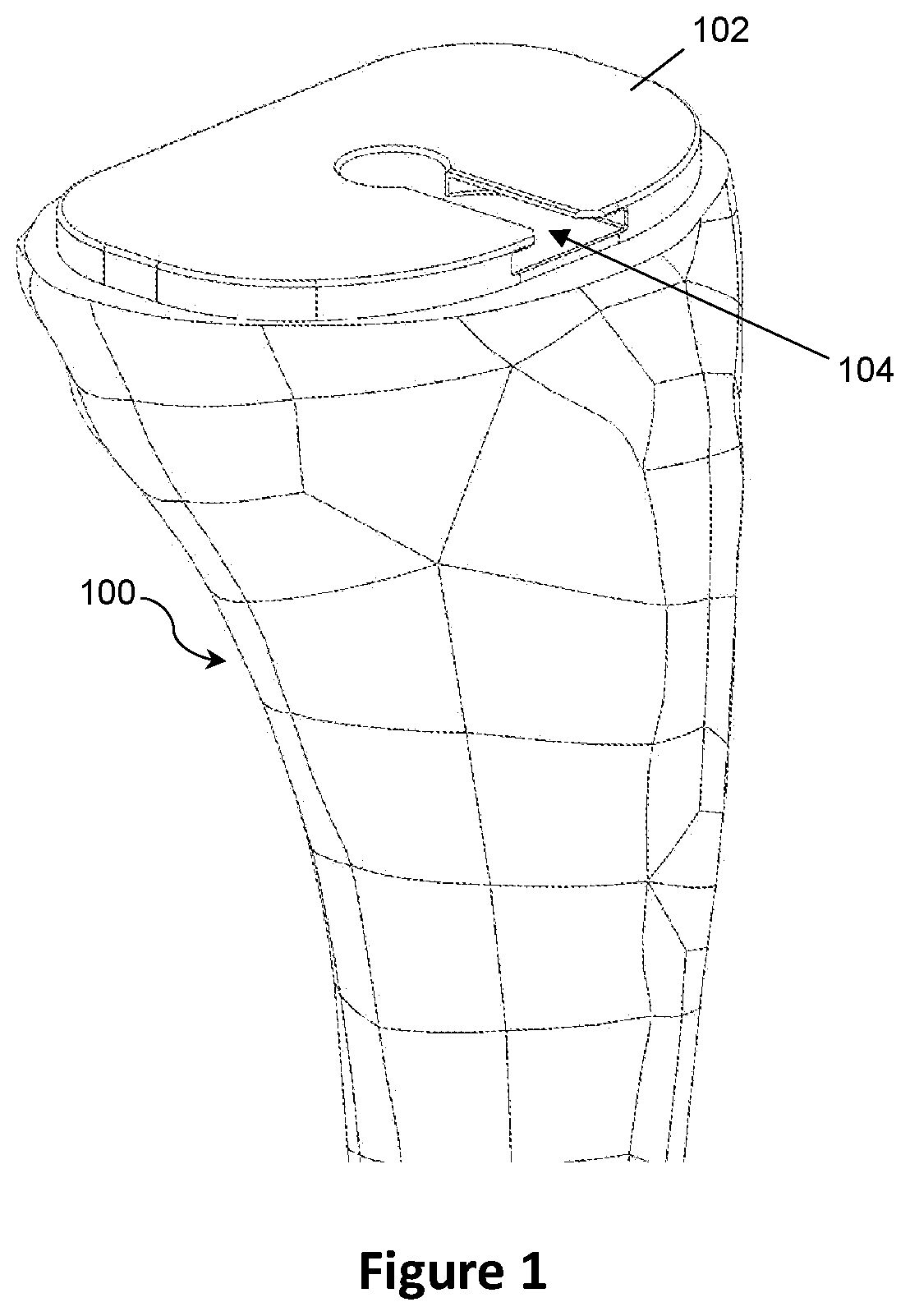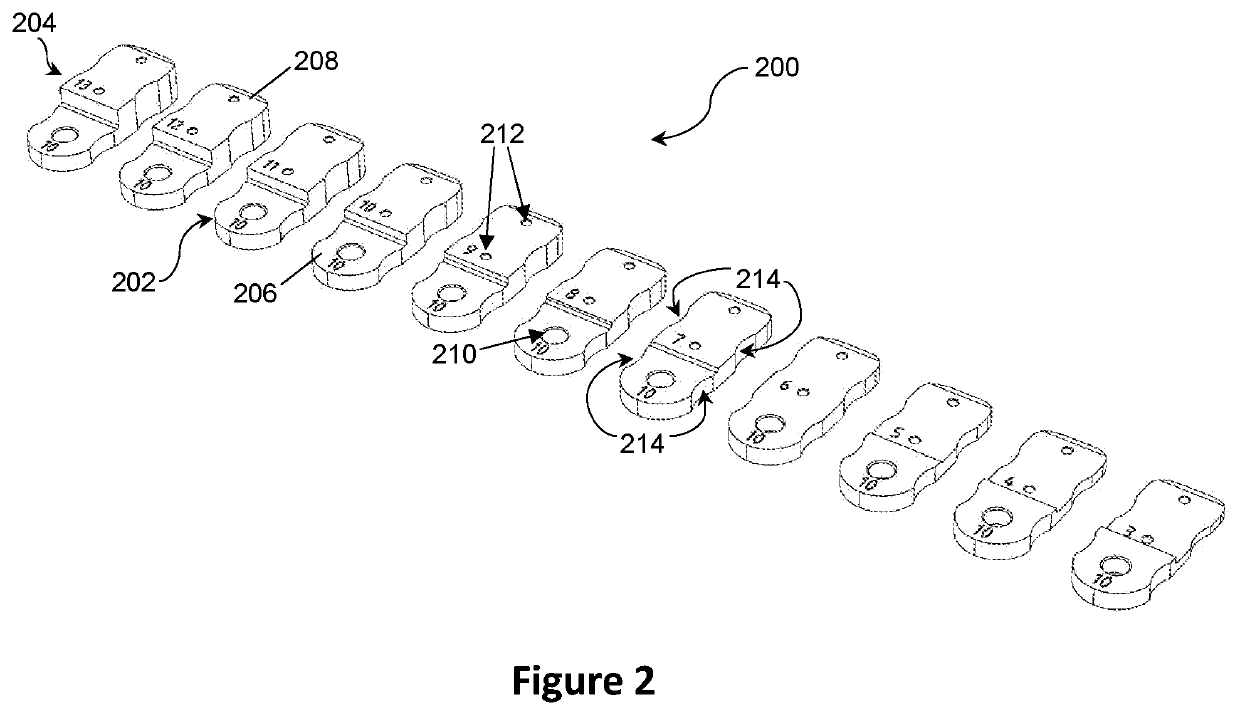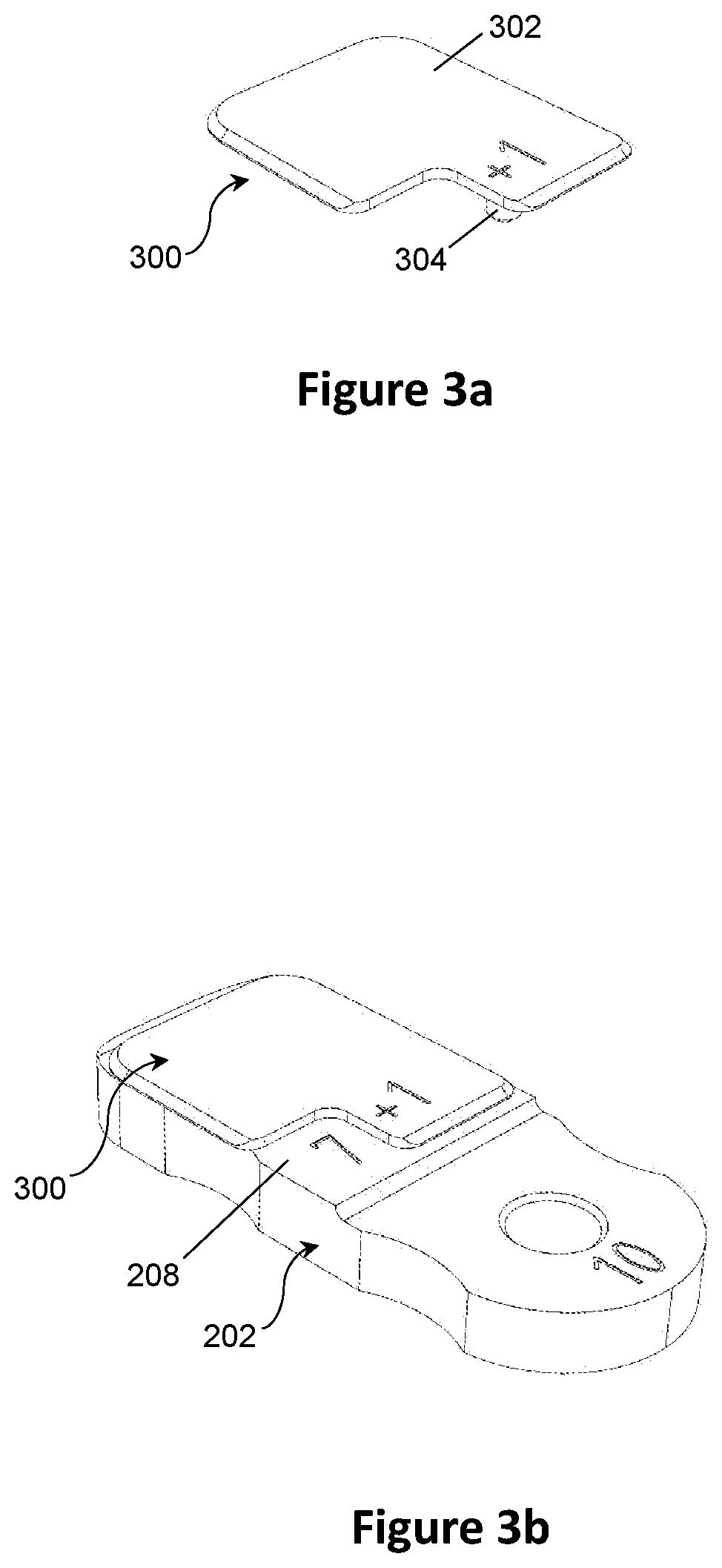Multifunctional spacer for knee surgery to achieve balanced resection
a multi-functional spacer and knee technology, applied in the field of multi-functional spacers for knee surgery to achieve balanced, can solve the problems of poor joint performance, patient discomfort, inconvenient operation, etc., and achieve the effect of reducing inventory and costs
- Summary
- Abstract
- Description
- Claims
- Application Information
AI Technical Summary
Benefits of technology
Problems solved by technology
Method used
Image
Examples
Embodiment Construction
[0057]FIG. 1 shows a first step in a total knee replacement procedure, in accordance with embodiments of the invention. Notably, a surgeon may utilise tools such as those described above and in GB2445620B without significantly altering his / her surgical technique.
[0058]As shown in FIG. 1, a proximal arthritic surface of a tibia 100 has been resected and fitted with a trial tibial component in the form of a trial tibial baseplate 102. The resection may be performed using an extra-medullary guide, an intramedullary guide, a custom tibial cutting guide, a navigation-assisted tibial cutting guide or a robot-assisted tibial cutting guide. Known knee-specific surgical instruments are used to prepare the proximal surface of the tibia 100 before the trial tibial baseplate 102 is inserted. In this particular embodiment, the trial tibial baseplate 102 is similar to that described in GB2445620B but further includes a radial anterior slot 104 which is configured for receipt of an alignment arm a...
PUM
 Login to View More
Login to View More Abstract
Description
Claims
Application Information
 Login to View More
Login to View More - R&D
- Intellectual Property
- Life Sciences
- Materials
- Tech Scout
- Unparalleled Data Quality
- Higher Quality Content
- 60% Fewer Hallucinations
Browse by: Latest US Patents, China's latest patents, Technical Efficacy Thesaurus, Application Domain, Technology Topic, Popular Technical Reports.
© 2025 PatSnap. All rights reserved.Legal|Privacy policy|Modern Slavery Act Transparency Statement|Sitemap|About US| Contact US: help@patsnap.com



